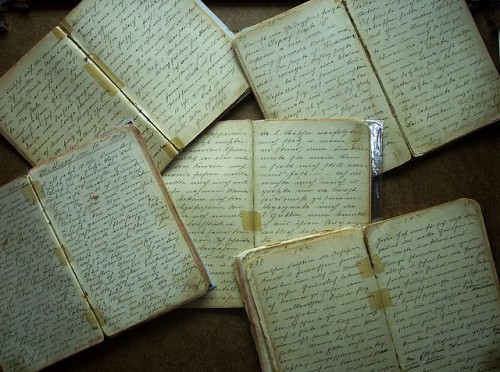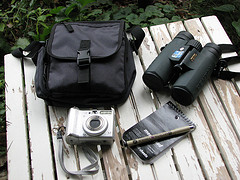
Once again, I was thinking that this year would be my year to keep a journal. Or a calendar. I spent a lot of time looking at various new options online, thinking that perhaps some clean fresh pages in a new format would help. Then I remembered this post, which first appeared in 2014.
One of my New Year’s resolutions is not to write in a journal everyday. I’m terrible at it, even though I wished I loved to scribble daily. I can’t even keep up with my Planner Pad. (In fact, I’ve already lost my 2014 edition).
That’s not to say that I haven’t occasionally kept a notebook. I have one from the eighth grade that is sealed shut with duct tape and says DO NOT OPEN UNTIL YOU ARE VERY OLD. I am not sure when I plan on opening it. The only time I’ve been successful in journaling is in cases of extreme boredom (see: eighth grade, and the summer when I had a two-hour commute) or extreme novelty. I usually write every night when I travel—often, in recent years, in hopes of being able to use the notes in a future story.
Absent these situations, I can’t do it. I get self-conscious. I devolve into whining. I lament my penmanship and my small mindedness. In every class where keeping a journal has been a requirement, I grit my teeth and do the minimum. I was thinking of applying for the California Naturalist program, but when I saw the naturalist notebook requirement (along with the every Saturday commitment), I had second thoughts.
But I do love reading other people’s notebooks. I like naturalists’ notebooks in particular, with sketches and descriptions of the places they visit—and sometimes, revealing the people behind the pen. These notebooks don’t seem boring—they’re fascinating. And also, quite useful. Both Henry David Thoreau, in Massachusetts, and Aldo Leopold, in Wisconsin, made extensive records of when plants flowered each spring. Last year, researchers compared these records to more recent flowering times, finding that plants bust out the blooms earlier when faced with climate change.
Even still, something about the idea of actually taking out the notebook and feeling required to use it seems intimidating, as if I need to be writing down the right things. As if there are right things to write about.

Maybe because I know what I’d really like to have my notebook look like is this. But I’m really not an artist; all my watercolors have been done with a glass of wine in hand, and they look like what you might imagine. While artists and naturalists offer many practical suggestions of what tools to include in a field bag, wine is never among them.
I’m not quite sure why I’m intimidated by doing this badly—there are plenty of other things I do badly without a second thought. So to give myself the easiest of resolutions (to complement the elephant seal training plan): to notice one thing each day, even if I never use a notebook.
The thing I’m noticing doesn’t have to be big, and it doesn’t have to serve some larger purpose. Take yesterday—the tide was low, and we found anemones covered in confetti bits of shell among the rocks. The biggest ones, each about the size of my hand, had pale blue tentacles and had tucked themselves into a pocket of water beneath an overhanging rock.
Later, I found out that the big patches of anemones were likely all clones—called aggregating anemones, they can divide and spread their genetically identical brethren across the rocks. They don’t mind being packed in with their gene-mates, but should they encounter an unrelated group of anemones, they’ll unleash the fighting tentacles and start their own version of clone wars.
Next time I’ll look for the fighting tentacles. Maybe I should bring some wine and watercolors after all.
**
Images Top: Wikimedia Commons user Walun Middle: Flickr user Donna L. Long